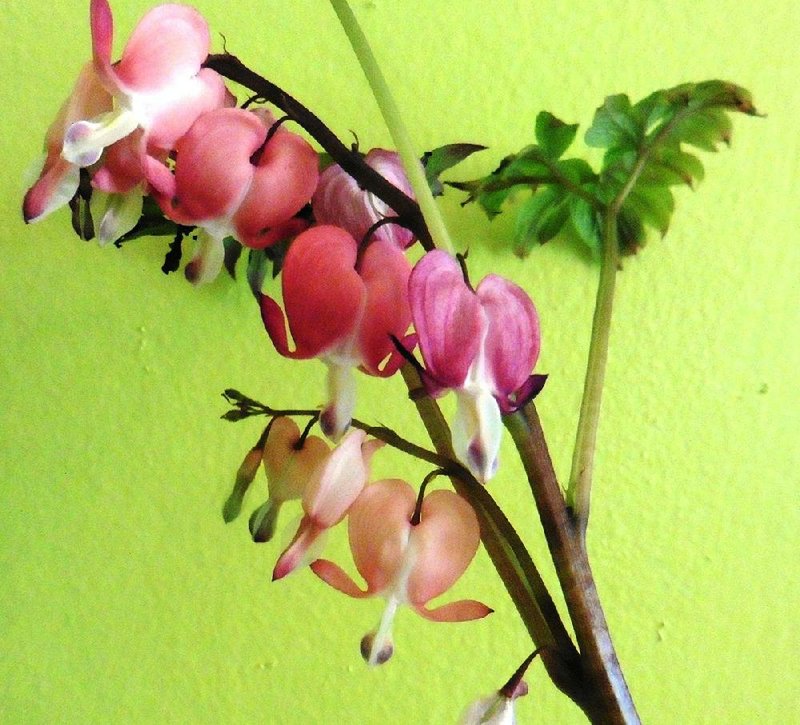MARCH
In early February we were skating on to spring and then -- zap -- winter returned with a vengeance. Precipitation and record low temperatures have sent many plants back into dormancy. We went from lovely camellias and flowering quince to brown blooms and a few damaged leaves on young rose sprouts.
• We can hope that was it for the season, but remember that any sort of weather is possible in March.
• Don't be too quick to prune damaged plants or do your annual rose, crape myrtle or fig tree pruning. Make sure the cold is over before pruning. Late pruning won't kill a plant, it merely delays first flowers. So hold off a couple of weeks to see what is happening.
• All shrub roses will need their annual pruning, so when you cut, take them back severely -- to a height of 18 inches or less.
• Climbing roses should be pruned after they bloom.
• Summer-blooming spirea (not spring-blooming) and butterfly bush (buddleia) should be pruned severely before new growth kicks in.
• If you have althea (rose of Sharon), crape myrtles, clethra or vitex that need pruning, it should be done before active new growth as well. Always have a reason to prune and know when and how.
• Garden centers have loads of vegetable transplants, along with seeds, onion sets and bulb and asparagus crowns.
• If you are like me and planted a late fall/winter garden, you are still harvesting. As you harvest, replant in those areas with cool season vegetables such as broccoli, carrots, lettuce, radishes, onions and seed potatoes. Don't even attempt warm-season vegetables until mid- to late April.
• Pay attention to the weather and if low temperatures are still coming, mulch and/or cover the young plants.
• Spring bulbs were blooming before the recent cold. Some have bounced back and are continuing to bloom while others are pretty bedraggled. You can't make the flower stalks stand back up, but the foliage should be fine, and new buds are coming on. Remember to keep the foliage green and growing for at least six weeks after bloom. Fertilize the foliage lightly to aid in bud production for next year.
• The milder December and January allowed winter annuals to become well established. Although here and there they froze on cold days, they seemed to rebound much better than last year. Fertilize them when it warms back up, and they should continue to bloom until April or May.
• English primroses in a wide array of colors are available, along with early ranunculus and even more pansies and violas to add to the color display. Hold off planting summer annuals until April.
• Winter weeds are growing well in our lawns. If you want a weed-free lawn, spraying now, before the grass greens up, needs to be done quickly. Look for a broad-leaf weed killer and spray only where you have weeds. Avoid spraying on windy or very cold days.
• Now is also the time to apply a pre-emergent herbicide. This won't kill growing weeds but should prevent the summer annuals like crab grass and Lespedeza. Avoid weed-and-feed combos, since you would only be feeding winter weeds now.
• When you resume gardening, divide any crowded summer- or fall-blooming perennials. Daylilies, purple coneflower, Shasta daisies and black-eyed Susan all grow prolifically and can slow down if they are too crowded. Many perennials benefit from division every three to five years. A few, like peonies, bleeding heart and hellebores, really like to be left alone.
PLANT OF THE MONTH
Bleeding heart (formerly Dicentra spectabilis) is an old-fashioned, early spring perennial. It has lovely heart-shaped blooms that resemble a teardrop falling out of the heart -- thus the name bleeding heart.
The most common variety has pink blooms with a white teardrop, but there are others: "Alba," a white-flowering form, and "Gold Heart," with golden foliage. The newest introduction, "Valentine," has a red heart with a white drop.
This early spring-blooming plant produces fern-like foliage with graceful arching stems of blooms. Each year the plant will grow slightly larger and bloom longer without getting bigger than 3 by 3 feet.
It likes a rich, moist, but well-drained soil. It will grow in light to heavy shade, but cannot take direct afternoon sun. It is often considered a spring ephemeral. It grows early, and six to eight weeks after bloom, the foliage usually dies back until the next spring.
As they have with many other Latin names, botanists have decided to change the name of the plant to Lamprocapnos spectabilis, but I still know it as Dicentra spectabilis. Call it what you will, bleeding heart is a great low-care perennial for the early spring shade garden.
Janet B. Carson is a horticulture specialist for the University of Arkansas Cooperative Extension Service.
HomeStyle on 02/28/2015
